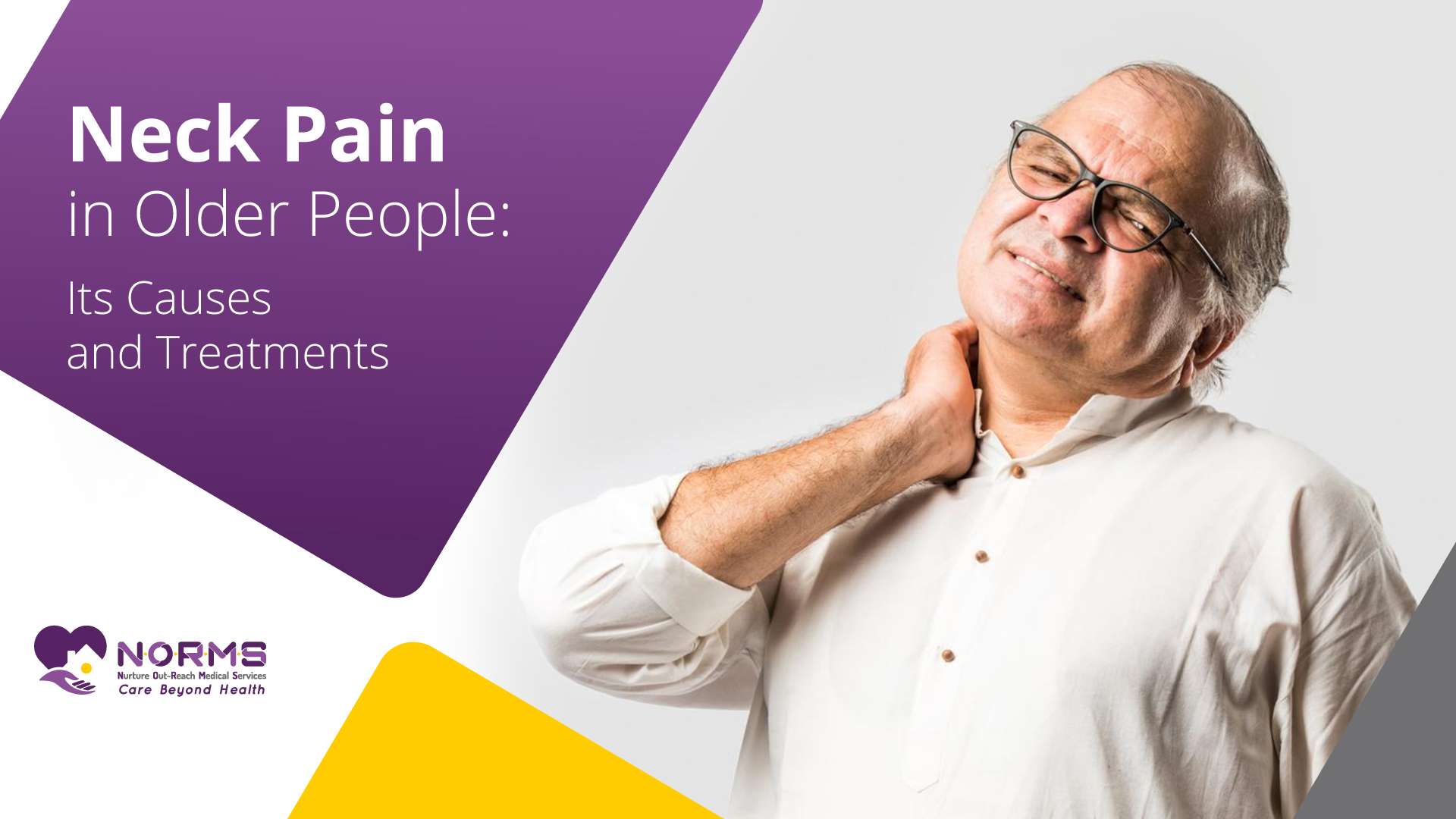
Older patients suffer from cervicalgia, which is pain in the neck. The cervical spine also experiences a number of changes as we age, leading to arthritis, degenerative disc disorder or spinal stenosis, which may result in cervical pain. Poor posture, low muscle mass, and degeneration of the spine also compound and aggravate discomfort. Cervicalgia in older people is treated using physiotherapy techniques in addition to exercise and lifestyle modifications that minimize neck pain and improve general health. Early screening involving frequent visits to health care facilities is vital since proper treatment can be administered to improve senior’s lives who develop cervical problems.
Neck stiffness in older people suffering from neck pain will cause their necks not to move easily. This limited range of motion may affect the performance of daily tasks.
Another possible symptom is weakness of the neck muscles. This may also complicate things concerning the support for the head as well as maintaining a proper sitting position, making the experience more painful.
Older people with neck pain often have headaches. Because of the connection between the head and neck, neck pain is frequently the result of tension or soreness in another part of the body.
The cervical pain can also extend elsewhere, like the shoulder and upper back. As a result, it can aggravate pain and affect the ability to move.
A few people might feel numbness and pins on the neck section. This may also suggest that nerves are involved; hence, medical intervention is necessary.
Such neck pain can affect sleep quality and thus disrupt one’s normal sleep pattern. It could therefore create an endless vicious circle of pain, tiredness, etc.
Sometimes, an old man’s neck pain can be connected with poor reflexability. It could stem from nerve compression or other problems.
Knowing these indications is critical to the timely and efficient treatment of cervical pain in the elderly.
Making a proper medical history for the elderly with cervicalgia is essential. The physicians ask about previous injuries, lifestyle issues and how long, as well as how intense and severe the neck pain is.
The patient undergoes a rigorous assessment that includes checking range of motion, muscle power, and possible manifested complaints. The tests can be specific and should reveal the exact causes of the pains in their source.
The cervical spine is examined in many instances with the help of imaging studies like X-ray, CT scan or MRI in order to obtain a more precise image. The diagnostic tool aids in investigating degenerative changes, disc herniation, or any structural anomalies leading to neck pain.
Nerve function may be assessed in older individuals during a neurological evaluation. Such investigation might enable one to ascertain whether the cervicalgia involves nerve pressure, hence causing paresthesias and pains.
Sometimes, as far as the rule-out of inflammatory or autoimmune conditions responsible for cervical pain is concerned, blood tests might be prescribed by physicians.
The diagnosis process can also entail collaborating with experts like an orthopaedist and a neurologist. This expert knowledge could enlighten us on the peculiarities of cervical pain among elderly women.
Developing a correct diagnosis would lead to proper, individualized treatment for elderly women in the pain case.
A physical therapist may also recommend specific exercises and stretches that can be performed while targeting the source of the neck pain. These are aimed at enhancing flexibility as well as strengthening the core muscle in order to alleviate the causes of cervicalgia.
The neck pain can be managed with pain relievers and anti-inflammatory medications. Therefore, older people should consult doctors who can best advise on what medicines are appropriate according to their general status and possible interference.
Heat or cold pack application to the affected region has been found to alleviate inflammation as well as relieve sore muscles. It may be advantageous to alternately use hot and cold therapies.
The neck muscles might be eased into relaxation through a professional massage or manual therapy sessionA trained therapist may target at various points to increase blood circulation and relaxation.
Small changes in daily routines like maintaining correct posture, having ergonomic items, and taking short breaks after long periods of seated posture greatly reduce neck pain.
Consequently, the comprehension of cervicalgia in the elderly population lays the foundation for early treatment and a higher well-being state. It is important to note that signs like limited range of motion, muscle weakness, headaches, and others can be identified early. This helps identify causes of backache ranging from degenerative changes associated with age to poor posture that results in back strains. Diagnosis is based on a complete clinical history review, physical examination, imaging studies, neurological testing, laboratory workup, and collaboration with specialists. A multidimensional approach that entails treatment options such as physical therapy, medications, heat/cold therapy, and lifestyle modification is adopted. By providing adequate management of this type of cervical pain, elderly people may feel much better.
In treating neck pain among the elderly, there is an emphasis on soft movements aimed at loosening their muscles, the use of appropriate analgesics, and adapted physiotherapy according to each case.
Older people can suffer neck pain as a result of degeneration of spinal discs, osteoarthritis, and reduced muscle mass. For this reason, other factors such as bad sitting or standing positions, old injuries, and even diseases of the cardiovascular system can also intensify pain in the neck.
Short-term solutions such as using ice or heat, a good neck pose when standing or lying down, however, the elderly must see a doctor for a general diagnosis and individual measures of permanent adjustment.